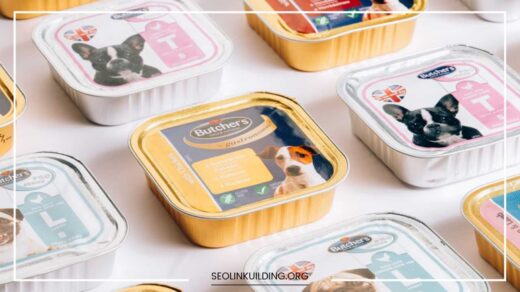How to Recycle Old Posts, and Why You Should

How to Recycle Old Posts, and Why You Should: Breathe New Life into Your Content
The pressure to constantly churn out fresh content is a constant struggle, especially in today’s fast-paced online world. But what about those valuable nuggets of information buried deep within your archives – the blog posts you poured your heart and soul into months, or even years, ago? Don’t relegate them to the content graveyard just yet!
Recycling old posts is a strategic and time-saving way to maximize the value of your existing content library. It allows you to reach a wider audience, boost engagement, and establish yourself as a thought leader in your niche.
In this comprehensive guide, we’ll delve into the “whys” and “hows” of post recycling, equipping you with practical strategies to breathe new life into your content and maximize its impact.
Why Recycle Old Posts? A Deep Dive into the Benefits
Here are some compelling reasons to consider recycling your content, going beyond the surface benefits:
- Capitalizing on Evergreen Content: Some content, like “baking tips for beginners” or “essential home maintenance hacks,” transcends time. Recycling these evergreen gems ensures they continue to be relevant and reach a wider audience who might have missed them the first time around. This not only saves you time creating new content from scratch, but also ensures you’re providing valuable, long-lasting information to your readers.
- Engaging New Followers and Building Authority: Your audience is constantly growing, with new followers joining your community every day. Reposting valuable content allows these new followers to discover the wealth of information you offer, showcasing your expertise and establishing yourself as a reliable source. This consistent content flow demonstrates your commitment to your niche, building trust and authority over time.
- Boosting SEO and Organic Traffic: Search engines prioritize websites with fresh, updated content. Regularly updating your blog with fresh content (even if it’s revamped old content) signals activity to search engines, potentially improving your search ranking. This organic traffic boost can attract new readers who might not have found you otherwise, further expanding your reach and growing your audience.
- Combating Writer’s Block and Reigniting Inspiration: We’ve all been there – staring at a blank page, desperately searching for inspiration. Recycling old content can be a lifesaver on those days. Revisiting your past work can spark new ideas, remind you of past successes, and even lead to the creation of entirely new content series based on existing themes. This can be a valuable exercise for reigniting your creative spark and overcoming writer’s block.
- Repurposing for Different Formats: Reaching a Wider Audience: Why limit yourself to text? Transform your old posts into infographics, short videos, or podcasts. This allows you to reach a whole new segment of your audience who prefer different content formats. You can cater to visual learners with infographics, auditory learners with podcasts, and those who prefer bite-sized content with short videos. This multi-format approach ensures your message resonates with a wider range of users.
Identifying Posts with Recycling Potential: A Strategic Approach
Not all posts are created equal. Here’s how to identify content ripe for a refresh, going beyond just looking at traffic numbers:
- Traffic Champs and Underrated Gems: Analyze your analytics to identify blog posts that consistently attract high traffic. These are clear winners deserving a second chance in the spotlight. However, don’t neglect underrated gems. Maybe a well-written post got buried under newer content or simply didn’t receive the promotion it deserved. Revisit older pieces and see if there’s valuable information waiting to be rediscovered. Look for posts with solid content but lower traffic – a refresh and strategic promotion could unlock their full potential.
- Timeless Topics and Industry Trends: Content on evergreen topics like productivity tips or healthy recipes is always relevant. Update these posts with fresh examples, new statistics, or address current trends within those topics to keep them engaging. For instance, a post on “productivity tips” can be updated to include new time management apps or remote working strategies. This ensures your content remains current and addresses the evolving needs of your audience.
- Content Gaps and Audience Feedback: Review audience comments and feedback on older posts. Are there recurring questions or areas where you can provide more in-depth information? This can identify gaps in your content that can be addressed through the recycling process. You can create a more comprehensive resource by merging related posts or expanding on sections that generated the most interest.
Repurposing Strategies: A Toolbox for Transforming Your Content
Now comes the fun part – transforming your chosen posts into something fresh and exciting! Here are some effective recycling strategies, going beyond the basic format changes:
- Revamp and Republish with a Focus on Value: The core of recycling isn’t just republishing the same content. Update the post with new information, statistics, and examples. Refine the language, address any outdated information, and optimize for current search terms. Most importantly, ensure the revamped content offers even more value to your readers than the original. This could involve adding actionable steps, addressing new pain points within your niche, or incorporating reader feedback.
- Create a Comprehensive Series from Scattered Posts: Do you have several blog posts on a similar theme? Consider consolidating them into a comprehensive series or guide, offering a deeper dive into the topic. This not only saves you time creating entirely new content but also provides a more structured learning journey for your audience. Organize the content logically, ensuring a clear flow of information, and consider adding an introduction and conclusion to frame the series.
- Craft a Listicle for Easy Consumption: Break down your content into a concise, easy-to-read list format, perfect for quick consumption and social media sharing. This is a great strategy for content heavy on actionable tips or steps. Ensure each list item is clear, concise, and offers a valuable takeaway for the reader.
- Infographics and Slide Decks: Visualizing Complex Information: Transform your content into visually appealing infographics or slide decks. Use clear visuals, data charts, and concise text to make complex information easier to digest. This is a great way to grab attention, improve comprehension, and make your content more shareable. Tools like Canva or Google Slides can be helpful in creating professional-looking infographics and presentations.
- Video Power: Engaging a Broader Audience: Repurpose your content into short, engaging video snippets for platforms like YouTube or Instagram Reels. This is a powerful way to reach a wider audience who prefer video content. Utilize text overlays, voice narration, or even animation to create dynamic and informative videos.
Repurposing Across Platforms: Expanding Your Reach Beyond Your Blog
Don’t confine your recycled content to your blog. Here’s how to leverage it across different platforms to maximize its impact:
- Social Media Powerhouse: Share your revamped post, infographic, or video clip on your social media channels. Tailor your message to each platform, using relevant hashtags and engaging captions to spark conversation.
- Guest Posting Opportunities: Consider offering your reformatted content as a guest post on relevant websites to reach a new audience. This is a great way to establish yourself as an expert in your niche and gain valuable backlinks to your website. Ensure your guest post adheres to the website’s guidelines and offers unique value to their audience.
- Email Marketing Magic: Breathe new life into old content by including it in your email marketing campaigns. You can create targeted email sequences featuring snippets from your revamped content or offer downloadable resources based on the repurposed material. This is a great way to nurture leads, engage subscribers, and promote your expertise.
Pro Tips for Successful Recycling: Ensuring Maximum Impact
Here are some additional pointers to ensure your content recycling efforts are successful and maximize the impact of your revamped content:
- Be Transparent About Revamping: Briefly acknowledge that the content is revamped or updated to avoid confusing your audience. You can mention the original publish date and highlight the key changes or additions you’ve made.
- Maintain Exceptional Quality: Strive for exceptional quality in your recycled content. Update visuals, ensure accuracy of information, and maintain a fresh and engaging voice. High-quality content reflects well on you and your brand, fostering trust and encouraging audience engagement.
- Schedule Reposts Strategically: Don’t just republish and forget it. Strategically schedule reposts of your revamped content on social media and other platforms to maximize reach. Utilize scheduling tools to ensure consistent content flow and maintain audience engagement.
- Track and Analyze Performance: Monitor the performance of your recycled content through website analytics and social media insights. See what resonates with your audience and adapt your approach accordingly. This data can inform future content creation strategies and help you refine your repurposing techniques.
By following these tips and strategies, you can transform your existing content library into a powerful tool for attracting new audiences, boosting engagement, and establishing yourself as a thought leader in your niche.
Remember, recycling content isn’t about shortcuts; it’s about maximizing the value of your existing work and ensuring your valuable insights continue to reach the people who need them most.
So, don’t be afraid to revisit your old posts, breathe new life into them, and watch them blossom into valuable assets for your content marketing strategy.













